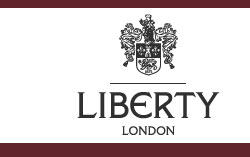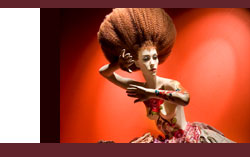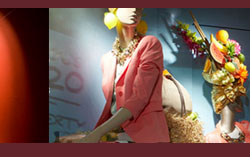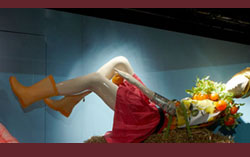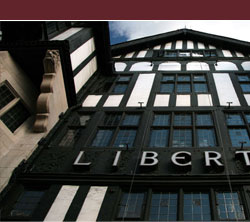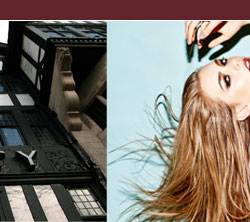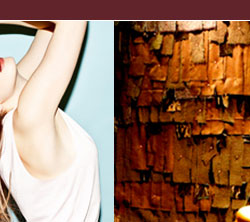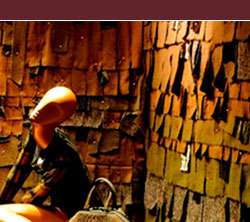1843
Arthur Lasenby Liberty was born in Chesham in Buckinghamshire.
1862
Liberty was employed at Messrs Farmer & Rogers in Regent Street; it was the same year as the International Exhibition at Kensington in London. In the Exhibition was a section devoted to Japanese art, the first major presentation of its kind in Europe.
When the Exhibition closed, Farmer & Rogers purchased some of the Japanese exhibits to form the basis for an Oriental Warehouse, which they opened next door to the main shop. Liberty was chosen to work at the Warehouse and two years later was appointed its manager.
1875
The history of 'Liberty' commenced when Arthur Lasenby Liberty opened a small shop at 218 Regent Street selling Oriental goods and fabrics. As the business grew, neighboring buildings were bought and added on to incorporate fabric, oriental carpets, curio and china. Silks in 'Liberty Art Colors' were an influential element in the Aesthetic Movement.
Liberty became the most fashionable place to shop and the clientele it attracted was exotic, including famous members of the Pre-Raphaelite Movement – Rossetti, Leighton and Burne-Jones and designers such as William Morris.
The demand Liberty created soon began to outstrip supply and Arthur Lasenby Liberty decided to import ready woven fabrics to be dyed or printed in the UK. He achieved this by using the expertise of various printing companies including Thomas Wardle of Leek in Staffordshire and Edmund Littler of Merton Abbey in Surrey, whose print works Liberty purchased in 1904.
Liberty started selling ladies fashion. The Costume Department had its own studio and workrooms, which were directed in its first year by the architect/designer EW Godwin.
1884
Liberty introduced the costume department into the Regent Street store, under the directorship of Edward William Godwin (1833-86). Godwin was a distinguished architect who believed in all aspects of art. He was a founder member of the Costume Society in 1882. His vision mirrored that of Arthur Liberty and they created in-house apparel to challenge the fashions of Paris.
1885
In 1885, 142-4 Regent Street was acquired and housed the ever-increasing demand for carpets and furniture. The basement was called the "Eastern Bazaar" home to all things described as "decorative furnishing objects". He named the property Chesham House after the place in which he grew up. The store became the most fashionable place to shop in London and iconic Liberty fabrics were used for both clothing and furnishings. Its clientele was exotic and included famous members of the Pre-Raphaelite movement.
1894
Arthur Lasenby Liberty turns the business into a public company with a capital of £200,000.
1898
John Llewellyn becomes a member of the Liberty board. It was under his inspired direction that designs for furnishing fabrics and later silver- and pewter-ware were commissioned from many designers.
1900
Harold Blackmore, Arthur Lasenby Liberty's nephew, became a member of the board and later Chairman from 1936 to 1950. It was he who built up the company financially.
1924
Because of compulsory renovation in Regent Street, where the land was Crown property, the company had to compromise by rebuilding in the mixture of styles required by the authorities. On the land in Great Marlborough Street owned by Liberty & Co, the world famous Tudor building was built.
It was designed to give an atmosphere of the Elizabethan merchants. Arthur Lasenby Liberty contributed much to its layout, but unfortunately he died before the building was completed. The timbers of two great warships of the Royal Navy, HMS Hindustan and HMS Impregnable, which were broken up in 1921, were used to build and furnish the building in solid oak and teak using authentic and original Tudor techniques.
1939
Liberty of London Prints, the wholesale company, was formed to take advantage of the growing demands for Liberty designs and fabrics.
1951
Arthur Stewart Liberty and Hilary Blackmore made their presence felt. Arthur Stewart Liberty, son of the founder’s nephew Ivor Stewart Liberty, guided the company through the modern era.
1975
Liberty celebrated its centenary. This was heralded by a major exhibition at the Victoria and Albert Museum.
1982
Liberty was re-registered as a public limited company
2000
Retail Stores plc controlled by Marylebone Warwick Balfour Group plc purchased Liberty plc.
2010
Liberty was bought by BlueGem and delisted from the stock exchange |
